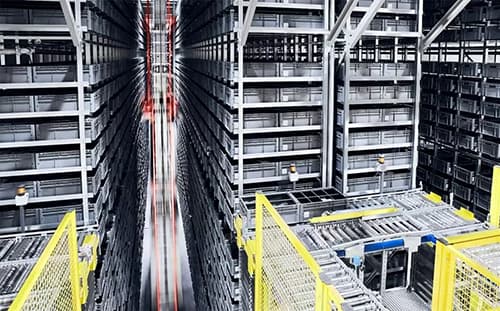机器人、自动化系统和人工智能等技术的进步促进了高度自动化仓库的发展。全自动仓库通常涉及各种技术和系统的集成,以最少的人工干预来执行接收、存储、拣选、包装和运输等功能。

以下是有助于仓库自动化的一些关键组件和技术:
1. 自动存储和检索系统(ASRS):ASRS 系统利用机器人起重机或穿梭车自动从指定存储位置存储和检索物品。这些系统可以优化空间利用率,增强库存管理,并实现快速准确的订单履行。
2. 自动导引车(AGV):AGV可以在仓库内自主运输货物,无需人工搬运物料。他们可以使用传感器在设施中导航并遵循预定义的路线或根据实时信息动态调整其路径。
3. 输送机系统:自动化输送机系统可以沿着预定路径移动物品,促进货物在仓库内的无缝流动。它们可以与其他自动化技术集成,例如 AGV 或拣选机器人,以确保高效的物料搬运。
4. 机器人和拾放系统:先进的机器人系统,包括机械臂和夹具,用于执行订单拣选、分类、包装和码垛等任务。这些机器人可以处理各种物品,并提高仓库操作的生产率和准确性。
5. 仓库管理系统 (WMS):WMS 是一种控制和管理仓库运营各个方面的软件应用程序。它协调不同自动化系统的活动,优化库存存储和拣选策略,并为高效决策提供实时信息。
6. 物联网 (IoT) 和传感器:物联网设备和传感器可以部署在整个仓库中,以收集和传输有关库存水平、设备状态、温度和安全等参数的数据。该数据可用于监控、预测性维护和优化整个仓库运营。
虽然完全自动化是可能的,但仓库中实施的自动化水平取决于所处理的货物类型、订单量、空间限制、预算和运营要求等因素。
通过艾米

Add: RM. 1204, BLDG.-2, NEW SPACE DEVELOPMENT CENTER, NO.126 TIANYUAN RD., JIANGNING, NANJING, CHINA.